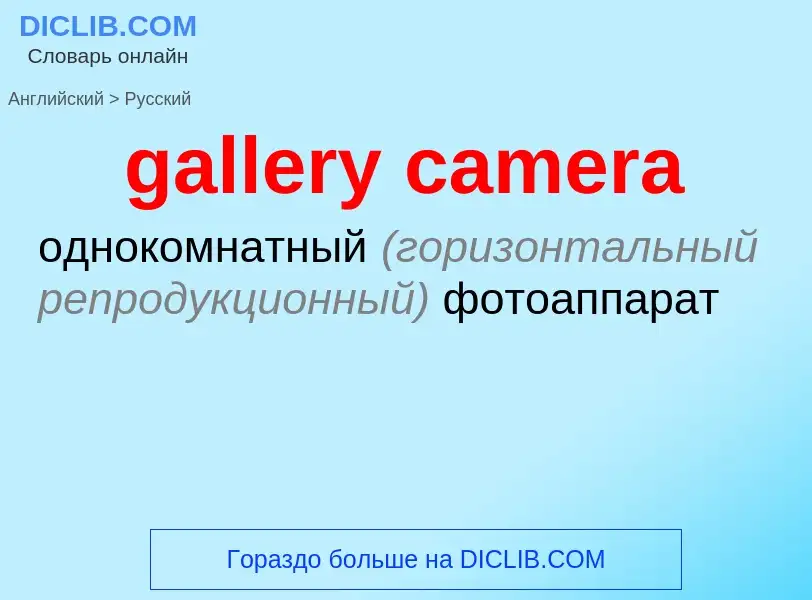Перевод и анализ слов искусственным интеллектом ChatGPT
На этой странице Вы можете получить подробный анализ слова или словосочетания, произведенный с помощью лучшей на сегодняшний день технологии искусственного интеллекта:
- как употребляется слово
- частота употребления
- используется оно чаще в устной или письменной речи
- варианты перевода слова
- примеры употребления (несколько фраз с переводом)
- этимология
gallery camera - перевод на русский
общая лексика
пластиночный фотоаппарат
[,kwi:nz'gælərɪ]
общая лексика
Картинная галерея королевы (со сменной экспозицией; принадлежит королевскому семейству [Royal Family], кот. владеет одной из богатейших частных коллекций картин в мире; находится в Букингемском дворце [Buckingham Palace]; вход для публики платный)
Определение
Википедия

A camera is an optical instrument that captures images. Most cameras can capture 2D images, while some more advanced models can capture 3D images. At a basic level, most cameras consist of a sealed box (the camera body), with a small hole (the aperture) that allows light to pass through and capture an image on a light-sensitive surface (usually a digital sensor or photographic film). Cameras have various mechanisms to control how light falls onto the light-sensitive surface, including lenses that focus the light and a shutter that determines the amount of time the photosensitive surface is exposed to the light.
The still-image camera is a key instrument in the art of photography. Captured images may be reproduced later through processes such as digital imaging or photographic printing. Similar artistic fields in the moving-image camera domain include film, videography, and cinematography.
The word camera comes from camera obscura, which is Latin for "dark chamber" and refers to the original device used to project a 2D image onto a flat surface. The modern photographic camera evolved from the camera obscura. The first permanent photograph was made in 1825 by Joseph Nicéphore Niépce.



![[[Arri Alexa]], a digital movie camera [[Arri Alexa]], a digital movie camera](https://commons.wikimedia.org/wiki/Special:FilePath/Arri Alexa camera.jpg?width=200)

![Zeiss]] lens Zeiss]] lens](https://commons.wikimedia.org/wiki/Special:FilePath/Hasselblad 500 CM.jpg?width=200)
![Leica]] c. 1936 Leica]] c. 1936](https://commons.wikimedia.org/wiki/Special:FilePath/Leica IIIa Rangefinder.jpg?width=200)
.jpg?width=200)



![Sony HDR-HC1E, a [[HDV]] camcorder. Sony HDR-HC1E, a [[HDV]] camcorder.](https://commons.wikimedia.org/wiki/Special:FilePath/Sony Handycam HDV digital camcorder HDR-HC1E.jpg?width=200)
.jpg?width=200)

